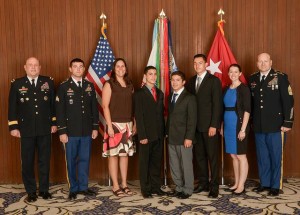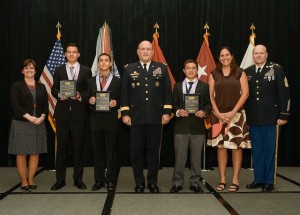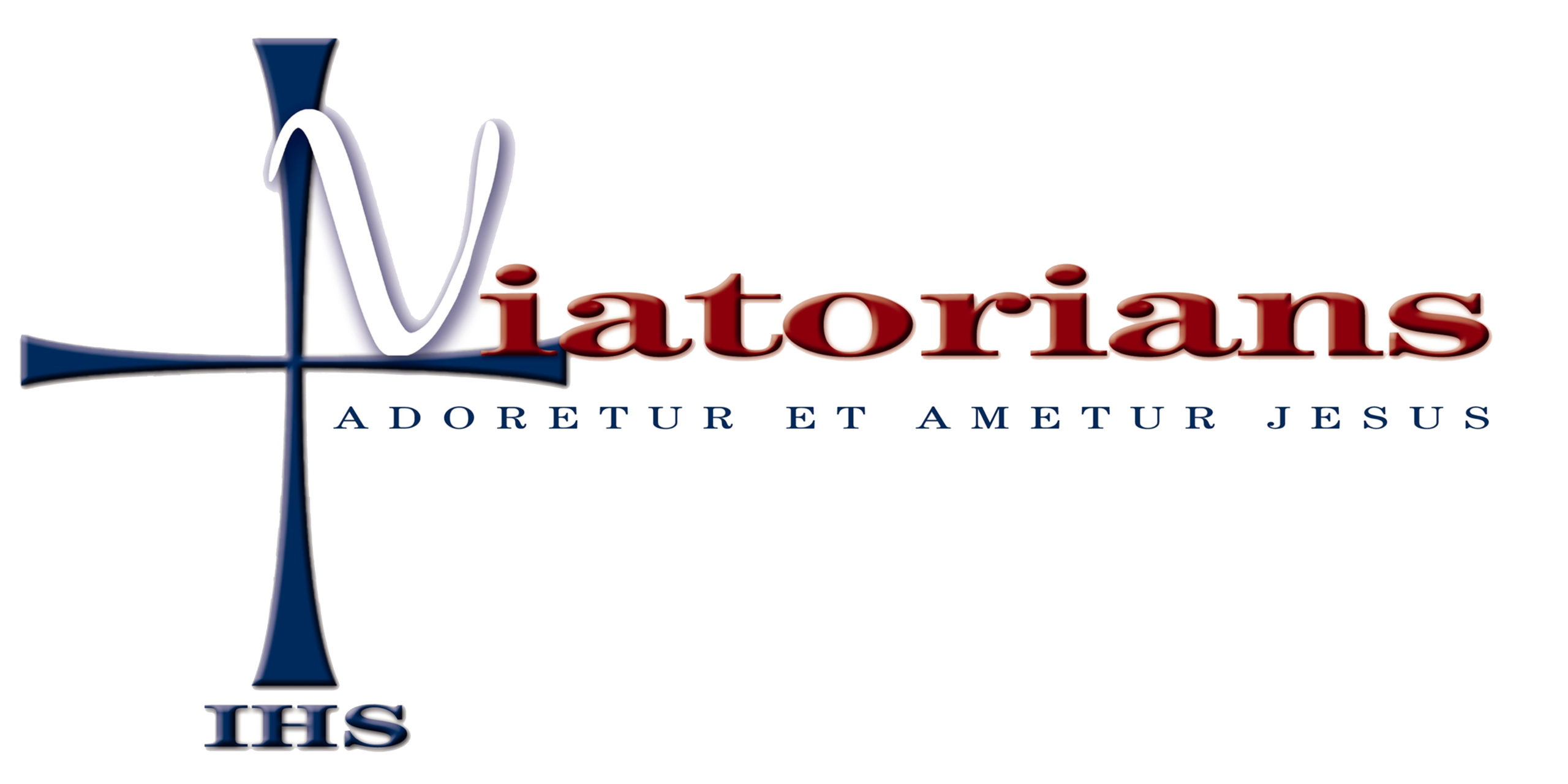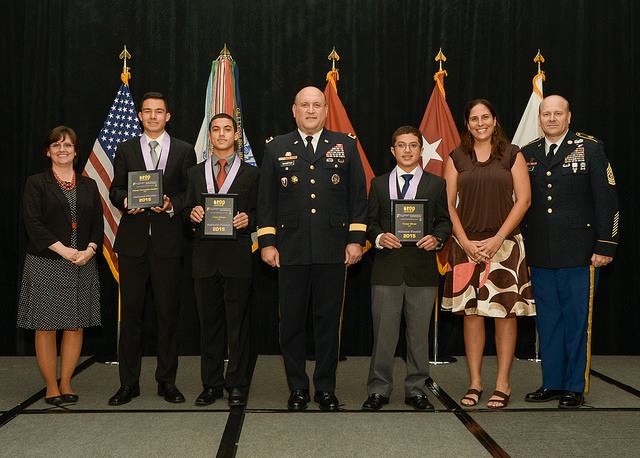A team of eighth grade students from St. Viator Parish School in Las Vegas advanced through state and regional competitions all the way to the finals of the 13th annual eCybermission competition, sponsored by the U.S. Army.
Eighth graders Tony and Trevor Olivas, and Milosz Fernandez-Kepka, traveled to Washington D.C. on an all-expense paid trip. They were among 20 teams that qualified for finals of the innovative STEM competition that challenged middle school students to develop solutions to real world problems in their communities.
The Las Vegas teens looked no further than their soccer fields, which are used year-round in the desert climate. Their project? “Cooling Down Artificial Turf.”
In an interview recorded on the National Public Radio station in Nevada, KNPR, the  young scientists explained that traditional turf uses infill from recycled tires, and as a result is extremely hot on their feet. In fact, they tackled this community-based problem when they noticed steam coming off their cleats.
young scientists explained that traditional turf uses infill from recycled tires, and as a result is extremely hot on their feet. In fact, they tackled this community-based problem when they noticed steam coming off their cleats.
They reasoned that the color of the turf helped draw the sun, as much as the infill substance, and after measuring the temperature, they described it as having “heat island effect,” or hotter than nearby natural turf.
At the outset, they used infrared cameras to detect and compare the heat of artificial turf to concrete, the human body and natural grass.
After analyzing the problem, they created a portion of their own turf. They spray painted it to make it lighter and used compacted clay as infill rather than the recycled tires.
“The lighter color turf, with the compacted clay, resulted in an average of 10-20 degrees cooler temperatures,” Tony Olivas said.
The eighth graders worked with St. Viator science teacher, Johana Franklin, in developing their project. Both she and Tracy Brunelle, new principal at St. Viator School, described the students and their project as an extension of the critically-based learning curriculum at St. Viator.
“They clearly are living up to our school-wide learning expectations,” Mrs. Brunelle said. “As faith-filled Catholics, they are life-long achievers, effective communicators, responsible decision makers and global citizens who are culturally aware.”

